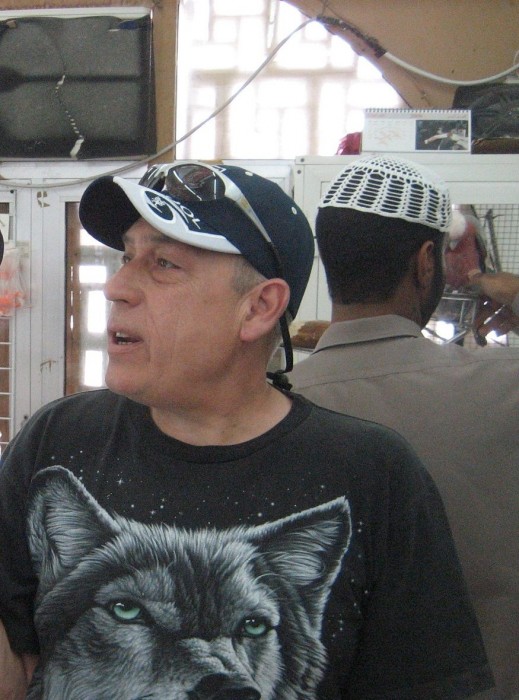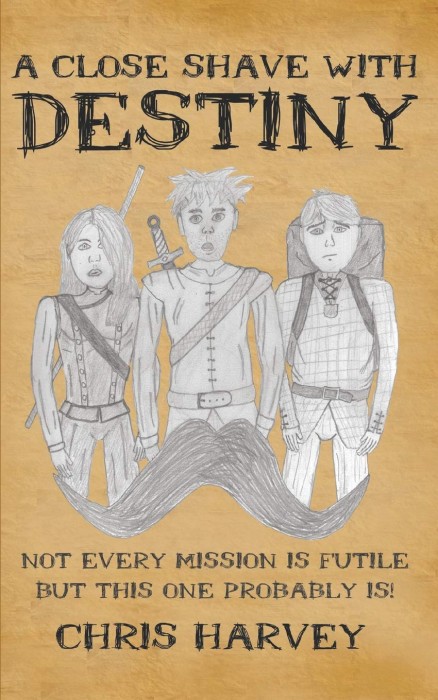PHP Deprecated: Creation of dynamic property Joomla\Registry\Registry::$default is deprecated in /home/authorsinfo/public_html/libraries/vendor/joomla/registry/src/Registry.php on line 937
PHP Deprecated: Creation of dynamic property plgContentLayerslideshow::$context is deprecated in /home/authorsinfo/public_html/plugins/content/layerslideshow/layerslideshow.php on line 38
PHP Deprecated: Creation of dynamic property SocialPoints::$string is deprecated in /home/authorsinfo/public_html/administrator/components/com_easysocial/includes/dependencies.php on line 123
PHP Deprecated: Creation of dynamic property SocialBadges::$string is deprecated in /home/authorsinfo/public_html/administrator/components/com_easysocial/includes/dependencies.php on line 123
Happy human, Happy dog
HAPPY HUMAN, HAPPY DOG
GOOD DOGS AT HOME
Many well-meaning people have behavior concerns with their dogs. Others wonder if they foster or adopt a new dog, if it will "get along" with their dogs they already have, both not realizing that behaviors will rehabilitate and new dogs WILL get along IF the people provide the proper leadership. Often, people lead with pity or "love", again not realizing that dogs need exercise & discipline FIRST to feel secure & to see that the human is the pack leader, not just a dog "lover". To truly love them is to provide what the dogs NEED. Simply by learning & implementing proper handling techniques, not only would shelters get more accurate evaluations, but also people would properly meet & introduce new dogs, & establish harmony in their packs at home, all of which helps save more lives!
With the crisis facing the shelter system nowadays, with far too many people irresponsibly breeding & abandoning dogs, thus every 8 seconds a dog is killed, & only 1 in 10 born get a forever home, it is of utmost importance to be responsible pack leaders & KEEP our dogs for life, to provide what they need to live happy, healthy & balanced!
Here are many general (& easy, yet very effective) tips for other routines to maintain consistency & calm balance in all things - on walks, at home, etc:
To provide stable energy, so they know their place in the pack, & dont try to figure it out amongst themselves; & trust/respect you as leader, thus, they feel secure; & so they dont have over excitement, fear, or dominance -- the following routines will help A LOT:
1) for walks - walk them as a pack - the newest dog to the pack, or most excitable, dominant, etc should be last place. If the others are nervous or excited, they should be corrected, so they can all see you are handling it, so they feel secure you are the leader & they dont feel they need to "help".
a) when you get leashes, wait until the dogs are calm before putting them on. Simply waiting can help them expel/subside excited energy
b) When you go to the door, make them be calm again & give you space around the door. "Claim" space w/ your energy; use strong body language & little sound, as any talk/sound can add to excitement.
Do NOT use their names. Simply block w/ a leg or arm, stand firm & walk towards them to back them up w/ your energy. If they advance unwanted, block & make a quick/sharp/firm sound like "Ch" or "Eh", &/or a quick/firm touch to get their attention to show you disagree w/ them moving fwd until they are invited.
This may be new to them & may take several minutes before they realize they have to make another choice to give you space & calm down. It is important they participate in backing up & waiting, not just being pulled to a spot & held there, so their mind is choosing to respect the boundary, rather than just by physical force, which can actually add to their frustrated energy. But if they choose to do it, it helps drain that frustration & reinforce the habit for future behavior.
So simply waiting, remaining consistent, calm, patient, firm will show them the new routine, what is expected is for them to be calm & submit to the behavior you want.
*It is also like exercise for their minds, so it helps expel any pent up frustration or stressed energy in them, so they will be calmer on walks & in other scenarios, too.
c) when you open the door, they should still wait. Again, block, back them up w/ strong energy of your own, & if it takes several minutes, see it is as a good teaching opportunity; dont get frustrated, they can only follow a calm, confident, positive leader, not a nervous or frustrated one.
(Like we would only follow a Dr's advice for ourselves if he was confident, not nervous or impatient about his diagnosis & treatment plan for us -- so we are like Dr's making the dogs "well").
When they are calm, you go through 1st & invite the calmest dog w/ seniority through 1st, then the newest dog or one who has the hardest time calming down through last, once they are calm, too.
d) on walks, make them follow you for several minutes "in the zone", this releases pent up energy & bonds them as a pack, w/ you as the leader. Make sure collars are high toward the ears, to help keep the head up & mind engaged -- not low toward the shoulders, which triggers their resistance/pull instinct.
or allows them to sniff at will, interrupting the pack moving in tandem.
If they need to be corrected not to go in front of you, you can block w/ a leg, or a quick sound "Ch", or carry a stick to put in front to block. It is best to stop & correct at the earliest sign of something unwanted & wait till they are calm & understand what is being asked of them before proceeding, so they fully comprehend the lesson & aren’t being given confusing signals of a correction but without vital follow through of what is expected or instructed.
Also, don't pull from behind them to bring them back; correct it before they pass you. A quick tug/release to the side or straight up on the leash can correct them, too. Don't pull from behind them, as it again, triggers their resistance/pull reflex, while to the side gets their attention toward you. (The best collar is high up on the neck behind the ears to access their mindset best, not low near the shoulders which can trigger their pull/resistance reflex, but with dogs w/ arthritis or flight risk to get out of collars, you may use a harness; you can also use a harness that attaches the leash from the front of the chest for strong pullers, so if they pass & you correct w/ a quick tug/release to the side, it turns them toward you, so every correction shows them to pay attention to your instruction.)
Make sure if they are complying, walking "in the zone", you do NOT hold any tension on the leash! And if corrections are needed, they should only be quick tug/releases, not constant tension held on leash or in your arm. Constant tension on the leash confuses them, sends your tension to them, saying they should be nervous or on alert as if something is wrong, etc - instead, they should feel you are calm & positive, so then the correction, if needed, will feel different to get their attention. Otherwise, if it is always tense on the leash, you are giving them tension all the time, which can make them have bad reactions to passing dogs, etc, & they wont feel a difference if you need to correct.
e) after several minutes of walking w/ you, reward with roaming & potty. Then end the walk w/ structured walking following you again.
When you return home, enter the same order you left: you, then dogs in order of calmness & seniority.
2. The same order for feeding. Let them cool down from a walk. Then feed. This mimics in nature, that they "worked" for food. Dont leave food out to “graze”. Have routine feeding times after walks & cooling down. Similar to the door, make them give you space when you prepare food. Back them out of the kitchen w/ your strong body language. Again, do NOT use their names to correct (only in positive times, affection - later when they are calm, or times to call them to you).
a) mix the food by hand, so your scent as the leader is in it, so they see you are the leader in all things, you provide all things, & the food is always yours, never theirs -- they are just allowed to it, but at any time, you can back them away from the bowl & give it to another dog, remove something unsafe from their mouth, etc.
*** & fyi, using an elevated stand for the food bowl helps dogs not be in a dominant, possessive position over the food. It is also good posture for digestion or dogs w/ joint arthritis.
b) make them wait calmly & give you space before they are invited to the food bowl. They should NOT fixate or stare at the food, but look away or hold eye contact w/ you. Do NOT say "OK" or other excited word to invite them to the bowl. This confuses them, since you have asked for them to be calm, but then tell them to get excited just before they go to it. Simply set it down, make them wait & once they are calm, wave your hand toward it or give a CALM matter-of-fact invitation verbally to invite them, or you can simply physically move away to create more open space around the bowl, indicating you invite or allow them to come to it.
Such routines will usually prevent any resource guarding.
But if they still guard it w/ a growl, etc. You can use an object such as a tennis racket if needed for safety. This allows the dog to react to the object w/o harming you, so that that you can keep it there over the bowl firmly, till they see you “claim” the food, & they choose to relinquish it & back away. Do NOT physically push them back. Their CHOICE to back up shows they gave up the challenge & relinquihed the top "dog" position to you. Then wait till they are calm, then repeat the routine of them giving respectful distance calmly, making eye contact, etc before being allowed to it again. Again, this routine will usually prevent any resource guarding, anyway. But if needed to correct, & if safely possible, you can also lift the bowl straight UP & block them, for instance, with strong body positioning so they sense to back up, or a quick noise to disagree w/ their dominant choice, or a swift touch to the neck or behind ribs as a correction (your hand as a dog’s mouth would deliver a correction in nature). If a full submissive correction is still needed, & you have the dog’s trust & respect, you may turn them on their side in submissive position until they relax, but NOT to trap or hold them down,; again, using your hands like a dog's mouth, giving them a correction "bite" w/ your fingers to their neck & behind the ribs. Dont hold them down by force but enough pressure/release if they resist to indicate you want them in that submissive position. Wait until they fully submit; you may notice panting, eyes/ears & leg muscles relax, sighs, yawns, etc. It can take several minutes, or they may calm & then struggle again, but follow through until they lie there on their own, & you usually don’t have to do this more than once to show you are the pack leader. The preventative routines of them giving respectful space & being calm before all activities, help reinforce & avoid any incidents even needing such corrections in the first place.
***If they are new to your home & do NOT trust or respect you fully yet as the pack leader, & there is potential bite risk, then you do NOT have to turn them on the side NOR lift the food bowl. If they growl or use other defensive or tense posturing to guard food, it may be safest to use a broom or tennis racket to go between them & the bowl as mentioned above, and regardless, always use a trained dog behaviorist professional to help you implement proper leadership & corrections in person.
Again, the preventative routine, an elevated bowl, & mixing the food by hand so your scent as pack leader is in it, all work together to reinforce the proper mindset & expectation to the dog to respect your leadership & behave as desired.
Repeat this feeding routine consistently & they learn very quickly & show respect to you as leader. And the other routines for walks, around the door, play, etc. also help reinforce your position as leader in all scenarios.
They will begin to see you as "top dog" orchestrating the order among all the dogs, so they will trust & respect, feel secure, & be obedient, responding by giving you space or other desired reaction w/ you simply raising a hand/outstretched arm, quick firm sound, etc.
3. Do NOT be excited when you leave or return home. Leaving saying "Bye" sends their mindset into an excited state. But leaving matter-of-fact leaves their minds calm. When you return, not excitedly greeting them shows them:
(i) you have a stable energy as the leader
(ii) it is not a big deal when you return, thus it is not a big deal when you leave, so that wont feed insecurity or separation anxiety, which could worsen into fear-nipping, destructive stress behaviors. Simply ignore them until they calm down. It usually only takes a minute. (This is more like in nature: pack leaders return, the pack doesn’t jump all over him, he doesn’t rile them up w/ affection, he is calm, & they give him respectful distance, awaiting instruction.)
*To truly care about our dogs, we have to provide what they need. Though some things may seem cute or funny, if it feeds any instability in their mindset or behavior, we should instead provide what helps them feel secure & calm, happy & balanced.
Affection should be last, after exercise & practicing routine discipline & boundaries. They are more secure & stable, calm & happy that way. Also, food, etc is affection to a dog. So petting is more for the humans, so that should only be last, when the dog is calm & respectful. And pet in the same order as the walk & feeding, the calmest dogs w/ seniority 1st, newest more instable or excitable dogs last, and only when they are calm/submissive as well.
4. Regulate play: By walking 1st, w/ proper routines of expecting calm behavior, then “cool down”, & reward w/ water, treats, or feeding time, then rest/digest, then potty, then play or affection/petting once they are calm, this proper order of things on a daily consistent basis helps prevent any behavior concerns. If you still need to help rehabilitate any resource guarding of toys, for instance, such behaviors can resolve quickly & fairly easily. If possible safely, you can simply step on a toy until the dog releases it (or use a tennis racket, etc. for safety if needed; this way, you can “claim” the toy w/ no risk of a bite & keep the racket there until they relinquish it & back away). This way teaches their mind to surrender, vs. simply having it forcibly taken away, which can trigger them to think it is a challenge for dominance. Also, don’t play tug of war, which is a struggle for dominant control; & don’t let them do the "kill shake" to toys. Again, don’t use their names or yelling for any corrections; simply clap or make a quick touch or sound to get their attention to show you disagree w/ that dominant mindset. (Squeaky toys mimic the sound a dying prey would make, so non-squeaky toys may be better for more dominant dogs, so you don’t trigger a predator mindset).
When dogs play w/ each other, don’t allow humping (dominance), nor too intense rough-housing or incessant chasing or overly “mouthy” play, which can lead to 1 dog showing dominance over another. Do a quick sound or touch to make them subside the level of intensity, so they see they can play, but you are the leader in all things letting them know at what level of excitement is acceptable, & so they are balanced, not unstable to trigger unwanted reactions.
5. For nervous dogs, don’t let them avoid by hding or running away, nor coddle them by petting them or picking them up, which can reward insecurity, worsen the behavior or prevent them from gaining confidence, security & social skills. It can also make their weak energy a target for a “correction” from another dog, which can be dangerous. Having them remain in the situation, giving calm, firm quick corrections to whichever dog may need it, shows them all they can trust you are handling things & keeping things peaceful. Nervous dogs, then can adjust to a calmer mindset & any dogs "aggressing" will see they don’t need to “correct” because you are in charge.
a) Lift the tail if a nervous dog tucks it; this helps release tension & unblock their mind from shutting down.
b) Don’t pull dogs forward if they shut down; instead, encourage from behind & you can use a leash to gently tug/release, but release as soon as they participate moving forward, so they see you agree w/ that momentum; this will help unlock them & keep them learning to move forward.
c) Better to pet nervous dogs under the chin (encouraging confidence), NOT on top of the head (dominance). But don’t pet to soothe a nervous dog. It can confuse them as if saying, “Good dog, be nervous”; thus, they wont see you as a competent leader to help them, so they will feel insecure as if no one is properly in charge. Instead, encourage them to stay near the situation where they were uncertain, & repetition of going in & out of that area, distracting w/ a treat during the process to help them more positively associate the experience, waiting until they relax in the area, etc. can all help desensitize to them to it, & teach them you helped them break free from the fear & achieve confidence & a calm state. End the process when they have fully subsided, so they remember that feeling as the lesson & the experience, which they will carry forward into future situations.
The dogs, whether insecure or dominant, need the people to provide the leadership & order, and balance/harmony among the pack, so they can all be happy, secure, trusting, respectful & balanced.
6. If you have guests over: practice the dogs giving you space at the door, similar to the routine before going for a walk. Use your body language & strong, confident & calm energy w/ simple, firm directions to back the dog up to give you space. Only then, when the dog is waiting calmly & respectfully, you can open the door & the guests can enter. Ask guests to not talk, make eye contact nor pet the dogs until they are calm. Sitting or squatting sideways to a dog w/o talking to them, nor touching them or making eye contact gives the dog time to adjust to the presence & be calm, secure, confident & not threatened/challenged, so they don't feel they need to be dominant or nervous. A dog approaching w/ a head low shows respect & the people can keep their posture more upright; this is a primal ritual of showing respect. Hugging & a lot of petting is not needed by the dog; those things are more for people. Dogs feel affection by the calm & respectful exchange.
7. Also, give any corrections at the earliest sign, (e.g., tense ears, staring, tense leg muscles, etc), not waiting for it to escalate to barks, growls, lunges. This way, the level of your correction has to be at the same intensity of the dog, so you can correct at the lowest level & prevent a more challenging process to bring their mindset back to calm. And simply waiting at each step of any practice process will give the give the dog time to figure it out & gives you time to remain calm & consistent.
*Correcting at the lowest level of behaviors is also important when creating harmony among the dogs. Watch closely for signs of staring, eye contact challenging each other, tense ears, tails, etc. Do not avoid having the dogs together, but safely use pack walk routines, leash corrections (or temporary muzzles or gates if needed for safety) to block unwanted behaviors & orchestrate pack harmony until they exist among each other with your guidance to gradually be together respectfully & under your leadership as a unified, calm, obedient, balanced pack.
Some dogs that may appear as "aggressors" may actually be trying to help you "correct" other dogs that may be too excited or nervous. If the exciteable dog is calmed by the person, the "aggressor" dog won’t need to act out or “help” you. Also, the “aggressor” dog should be blocked, so they are told by the human pack leader that the person is in charge & does not need or allow dogs to participate in the discipline or correction process. This tells ALL the dogs you have it under control, so the more dominant dogs will subside, & the nervous dogs will trust & get more confident. Some people see dogs as "victims", but that dog may actually be triggering an attack w/ their own weak or nervous energy. The dog “aggressing” should be blocked, but also the nervous dog should not be allowed to keep exhibiting weakness. A truly aggressive dog would lunge without provocation. Though in the case of nervous dogs, the provocation may be subtle, the trigger is still there, & educating oneself on what early signs to look for (tucked tails, intense stares, etc), correct & prevent, will help maintain pack harmony.
*Other things that are often misunderstood as “aggression” includes fearful growling, insecure nipping, trying to “correct” other dogs who triggered a reaction w/ overly active energy or excitement, nervous weakness, or other imbalance. If there is an incident between dogs, the dog initiating should be corrected at the earliest sign possible (for example, even a stare from across the room can trigger a fight, so look for early ways to prevent, so that you remain calm & in charge, so the dogs can remain calm, too.) If a correction is needed, use a firm block w/ strong body position, swift touch, or quick sound to show them you disagree w/ an unwanted behavior. Again, avoiding using names, yelling or nervous, impatient nor frustrated energy, so sound does not add intensity to their already elevated state.
If a correction is needed, separate dogs safely but not to avoid each other. Remaining near enough to both end the experience in a calm manner will teach them proper behavior for future situations. (you can see above in the section about feeding for more info: The one who initiated the incident can be corrected, made to submit & wait until they fully subside. While the one who was on the receiving end of an incident can be kept standing nearby until they also calm; this way, they are physically higher than the more dominant one, who may be sitting or lying down, maybe even on their side once corrected & subsided,
& this way, the less confident dog will not avoid or flee, so they don't develop further fear issues, which can trigger future incidents. With this process, both dogs end the event w/ you in charge & both at a calm level, so they learn what result you desire, which is showing them the proper state of being is calm, with you properly orchestrating leadership for pack harmony.)
*Throughout the process, remain calm & confident, take a deep breath to reset if needed, so you can follow through the entire process, so the dogs can learn the entire lesson, rather than just receiving a quick correction w/o follow through, which wouldn't fully teach them what behavior you want.
Again, always bring in a dog behaviorist professional to properly help diagnose & rehabilitate the dogs on both ends of the spectrum, and to train you how to properly identify behaviors & follow through.
8. Other helpful info:
(a) do NOT correct them AFTER an incident, like when they have pottied inside, chewed something, etc - they will not remember & not understand what they are being "punished" for.
*For potty training: walk, cool down, feed, rest or crate apprx 20-30minutes, then take them outside to designated routine area to potty.
*For correcting other behaviors like chewing, etc: AFTER exercise so their excess energy is drained, so they can focus on the discipline practice, place the objects in front of them & give quick firm corrections to block from those objects, w/ praise & treats to redirect.
*If they have separation anxiety destructive behaviors, see below for tips to crate train &/or practice in intervals of leaving, w/ your energy both upon leaving & return calm & assertive, & only practice AFTER exercise to drain their stressed, frustrated, excited, or pent up energy.
(b) envision what you want &what remarkable progress is possible; DON’T hold the tension of anticipating a problem -- by feeling that anxiety, you can actually trigger it & cause a problem to happen. But having the calm, assertive & positive energy of what you want can create that desired outcome.
Crate training if needed:
i) walk the dog before you leave, as this expels pent up energy.
ii) Make sure your own energy remains calm, confident, & positive; dogs can sense it if we are nervous, frustrated or anticipating a problem & we can actually trigger unwanted reactions in them.
iii) You can practice w/ the dog going in & out of the crate WHILE YOU ARE STAYING HOME, so they see it as a place they can VOLUNTARILY hang out, WHILE YOU REMAIN IN THE ROOM w/ them; for instance, they can have a treat or toy in it while you clean, cook, etc. Leave the crate door open, give them water after a walk in it, for instance, to invite/entice/coax them in, but if they check it out inside the crate, do NOT close the door, let them freely go in or out so they don’t see it as a trick or trap, especially while forming new trust w/ an unfamiliar new routine or re-establishing a new, positive association w/the crate.
ALWAYS do such practice AFTER exercise.
a) Once they go inside & are calm after several times in & out, you can close & open the door, giving treats & praise, petting UNDER the chin to encourage (not on top of the head, which is dominant).
b) When they door is open, raise a hand & say a quick/firm "Ssh" while “blocking w/ your own strong body language, so they know not to advance out. This may take a few minutes to practice a few times, but remain calm & firm, so they understand an open door does not mean bolt out, but you are teaching them the crate is not a negative place to be, & that they can hang out in it w/ the door open voluntarily, & are invited in or out calmly.
c) Have blankets, toys, treats in it so they see it as a safe den, not a place where they are put & then left alone. (For instance, some dogs have had such separation anxiety, they may have even bitten through the metal of the crate, even chipping teeth or causing other injury or destruction, but after properly working w/ them, including not greeting them when you return home, calmly practicing time in the crate as a positive “den” option, & all the other daily calm routines to reinforce a secure, balanced mindset, they can quickly learn that they may actually like to "den" in a crate, or otherwise feel calm if you leave, entertain themselves w/ calm, solo time w/ a toy, etc.)
So always see every “issue” as an opportunity to learn & teach, rehabilitating your own energy & leadership, & meeting the needs of the dog, helping them become secure & balanced -- ultimately, happy & healthy in mind & body.
Approach each exercise envisioning the possibility for wonderful learning & achievement. Dogs live in the moment & given the proper leadership & guidance, they can & will improve quite quickly.
d) You can end the practice when they are CALM. If you follow thru until they are calm, they will learn the positive message. Then you can proceed to some play time or affection, so they see crate = calm = happy
Normal 0 false false false EN-US JA X-NONE
With daily walks, & practicing exercise 1st, practicing the routines & boundaries, & giving rewards when they are calm, such structures can rehabilitate behaviors very effectively, seeing improved results w/in minutes, & often w/ established progress & habits w/in just a couple weeks.
Progress can continue for months, even years, so keep up the good leadership for the good of your pack! Old dogs can learn new tricks! It is never too late to implement proper leadership.
And another bonus of the beauty of dogs is that learning & implementing the techniques to rehabilitate dogs' behaviors can actually help us have more calm, confident, positive & balanced/healthy energy ourselves in all areas of life. That's why a dog's behavior rehab can be looked at as positive opportunity, not an anxious or frustrating problem, & that mindset can help the rehab process succeed. Dogs do not hold onto past unstable incidents as people can. It is a common mistake to think they are “protecting” us or “traumatized” by past incidents; actually, the dog may simply feel insecure w/o being provided a proper pack leader (e.g., given affection while in a nervous or overly excited mindset, or having been through an incident that wasn’t resolved properly, ending in a calm state. For instance, people can hold tension on a leash, & that 1 seemingly simple thing can trigger unwanted reactions in dogs, as they sense there is something to be uncertain about.) Dogs sense our energy, which can dictate their behaviors. They can react to things like patterns/habits or instincts, especially if previous incidents were not resolved w/ the process ending w/ them being calm, but they can rehabilitate those behaviors quickly, given the proper leadership techniques are put into place. Dogs go w/ the "new day", though it may be new to them, unfamiliar & even a challenge, but w/ consistency, they can adapt & learn quickly. The more positive & consistent we are, the more calm the dog is. Their need for our leadership is an opportunity for US to be calm & happy, so they can be, too! Thank you for being a caring, committed pack leader!
For more helpful info: the book "Be the Pack Leader" is only apprx $10 on Amazon & has lots of helpful guidance for walks, feeding, & other behaviors.
When you subscribe to the blog, we will send you an e-mail when there are new updates on the site so you wouldn't miss them.

















Comments